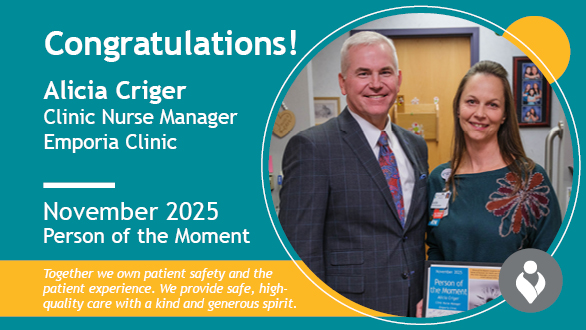Newsworthy
How Food Insecurity Creates Barriers to Health
The USDA defines food insecurity as a lack of consistent access to enough food for an active, healthy life. When individuals can’t regularly afford adequate food for their families, they often turn to cheap, calorie-dense foods with minimal nutritional value.
This problem is why families facing inconsistent sources of healthy food often experience higher rates of obesity. However, the importance of access to healthy food extends beyond weight management; it also affects overall quality of life.
For example, poor nutrition may increase the risk of cancer. Alternatively, food is a key factor in cultural expression and often plays a central role in activities and events that unite people and communities.
Food insecurity is among the biggest barriers to health in Shawnee County. Many residents have a limited ability to access fresh, nutritious, and affordable food due to factors such as:
- A lack of transportation
- Soaring food and fuel prices
- A lack of nearby retailers with healthy food options
These issues are also known as social determinants of health, or the circumstances in which people are born, grow, live, work, and age that shape health. Other examples of social determinants of health that affect a person’s ability to access basic needs include:
- Housing
- Nutrition
- Education
- Social support
- Healthcare services
According to results from the March 2022 Shawnee County food assessment, 1 in 10 (11%) Shawnee County residents experienced food insecurity in 2019, versus the state’s overall food insecurity rate (12.1%). Additionally, food insecurity in Shawnee County children is similar to the statewide rate (18.4% in Shawnee County compared with 18.3% for Kansas).
How Stormont Vail Helps Patients Overcome Food Insecurity
The mission of Stormont Vail Health is “working together to improve the health of the community.” We do our part by studying how various barriers limit access to healthcare. In Shawnee County, the most common obstacles include:
- Income
- Racial bias
- Food insecurity
- Access to transportation
Of course, addressing social determinants of health is a complex, challenging, and long-term process. Additionally, it calls for cross-organizational cooperation to create a collective framework. However, we’re hopeful that We Together will eventually make a difference.
This article is part of a four-part series on specific factors that limit access to healthcare for many people in Shawnee County. This post explores how food insecurity affects county residents and how Stormont Vail strives to help individuals receive quality care regardless of income.
Endocrine Clinic Prescriptive Food Pantry
In 2019, Stormont Vail launched the Endocrine Clinic Prescriptive Food Pantry with a grant from Advisors Excel. The objective is to make it easier for diabetic patients to manage their condition by addressing food insecurity.
Stormont Vail stocks the food pantry with boxes of shelf-stable healthy food purchased from Harvesters. Care managers order the meat and produce online using Wal-Mart’s pick-up service, making it convenient for patients. Since launch, patient health has improved remarkably, with decreased A1Cs, blood pressure, and weight.
Stormont Vail expanded this initiative in the fall of 2021 following the successful health outcomes for endocrine clinic patients. In addition to expanded referral sources, Stormont Vail began supplementing the boxes with meat and fresh produce to enhance their nutritional impact and further improve health outcomes.
Community Resources for Food Assistance
Stormont Vail provides a list of local food assistance programs, including:
- Harvesters Food Distribution Events
- Harvesters Community Food Network Food Pantry List
- Shawnee County K-State Research and Extension Food Distribution Map (also available through MyChart and visit summaries)
Eliminating Food Insecurity Benefits Everyone
Social determinants of health interconnect. When one need goes unmet, additional problems can arise in other areas, further limiting access to healthcare. For this reason, policymakers in healthcare and leadership must create sustainable solutions that address multiple social determinants of health.
Removing barriers to community health is complex, and change will take time. These efforts require everyone involved to look beyond individual or institutional priorities. A cooperative framework is needed to eliminate ongoing inequities and facilitate equity for everyone now and in the future.
Sources
- American Hospital Association. (2017). Social determinants of health series: Transportation and the role of hospitals | AHA. American Hospital Association. https://www.aha.org/ahahret-guides/2017-11-15-social-determinants-health-series-transportation-and-role-hospitals
- Census profile: Topeka Public Schools Unified School District 501, KS. (n.d.). Census Reporter. https://censusreporter.org/profiles/97000US2012260-topeka-public-schools-unified-school-district-501-ks/
- PatientEngagementHIT. (2021, February 1). Top Social Determinants of Health Barring Patient Care Access. PatientEngagementHIT. https://patientengagementhit.com/news/top-social-determinants-of-health-barring-patient-care-access




